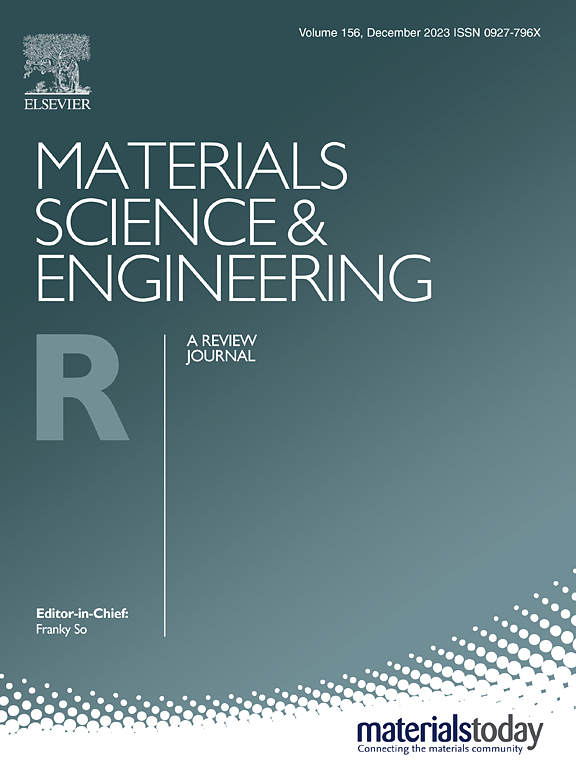本征可拉伸电子器件中的相分离:机理、功能和应用
IF 31.6
1区 材料科学
Q1 MATERIALS SCIENCE, MULTIDISCIPLINARY
引用次数: 0
摘要
由本征可拉伸材料制成的可拉伸电子元件因其与软组织卓越的机械兼容性,在未来的人体友好型电子应用中备受关注。然而,具有同质导电网络的本征可拉伸材料往往会为了实现可拉伸性而牺牲电气性能。通过采用相分离策略,合理地分离导电网络和可拉伸基体,可以在不牺牲可拉伸性的前提下显著提高这些电子器件的电气性能。同时,相分离还可用于生产各种多孔微结构,赋予可拉伸电子器件理想的功能,如应变缓冲、增强离子传输、透气性和被动冷却。在本文中,我们回顾了通过相分离策略制造的可拉伸电子器件的最新进展。在深入探讨了各种相分离策略背后的驱动机制后,我们展示了具有代表性的实例,以突出相分离结构在可拉伸电子元件和设备中的多功能性。此外,我们还讨论了目前利用相分离策略制造下一代本征可拉伸电子器件所面临的挑战和前景。本文章由计算机程序翻译,如有差异,请以英文原文为准。
Phase separation in intrinsically stretchable electronics: Mechanisms, functions and applications
Stretchable electronics made from intrinsically stretchable materials have garnered a great deal of attention for future human-friendly electronic applications due to their exceptional mechanical compatibility with soft tissues. However, intrinsically stretchable materials with homogeneous conductive networks often compromise electrical performance to achieve stretchability. By employing phase separation strategies that rationally separate conductive networks and stretchable matrix, the electrical performance of these electronics can be significantly improved without sacrificing stretchability. Meanwhile, phase separation can also be applied to produce diverse porous microstructures, endowing stretchable electronics with desirable functionalities, such as strain buffering, heightened ion transfer, air permeability, and passive cooling. In this article, we reviewed the recent advancements in stretchable electronics fabricated through phase separation strategies. After delving into the driving mechanisms behind various phase-separation strategies, we showcased representative examples to highlight the versatile functionalities of phase-separated structures in stretchable electronic components and devices. Furthermore, we discussed the current challenges and prospects of utilizing phase separation strategies for next-generation intrinsically stretchable electronics.
求助全文
通过发布文献求助,成功后即可免费获取论文全文。
去求助
来源期刊

Materials Science and Engineering: R: Reports
工程技术-材料科学:综合
CiteScore
60.50
自引率
0.30%
发文量
19
审稿时长
34 days
期刊介绍:
Materials Science & Engineering R: Reports is a journal that covers a wide range of topics in the field of materials science and engineering. It publishes both experimental and theoretical research papers, providing background information and critical assessments on various topics. The journal aims to publish high-quality and novel research papers and reviews.
The subject areas covered by the journal include Materials Science (General), Electronic Materials, Optical Materials, and Magnetic Materials. In addition to regular issues, the journal also publishes special issues on key themes in the field of materials science, including Energy Materials, Materials for Health, Materials Discovery, Innovation for High Value Manufacturing, and Sustainable Materials development.
 求助内容:
求助内容: 应助结果提醒方式:
应助结果提醒方式:


